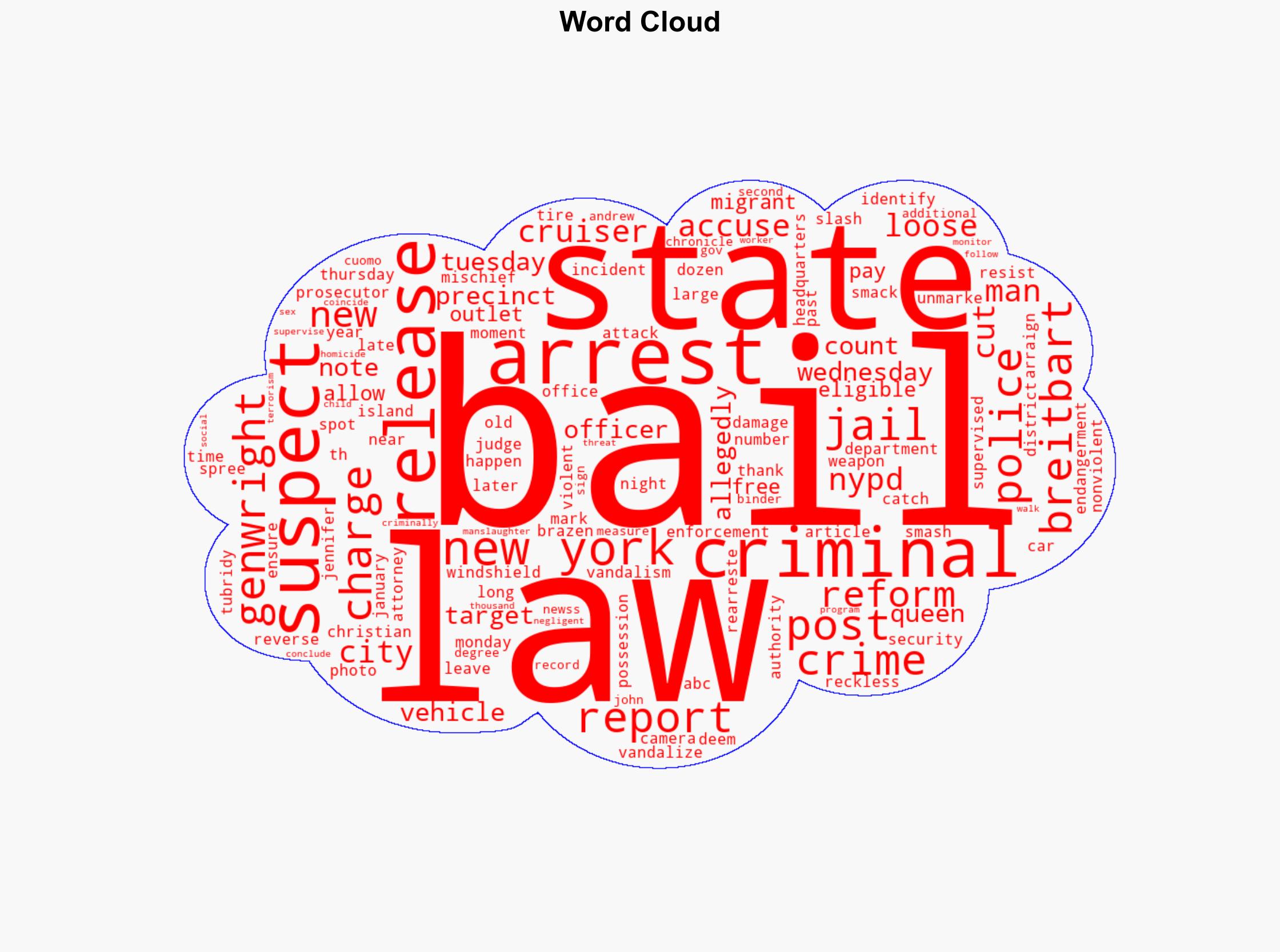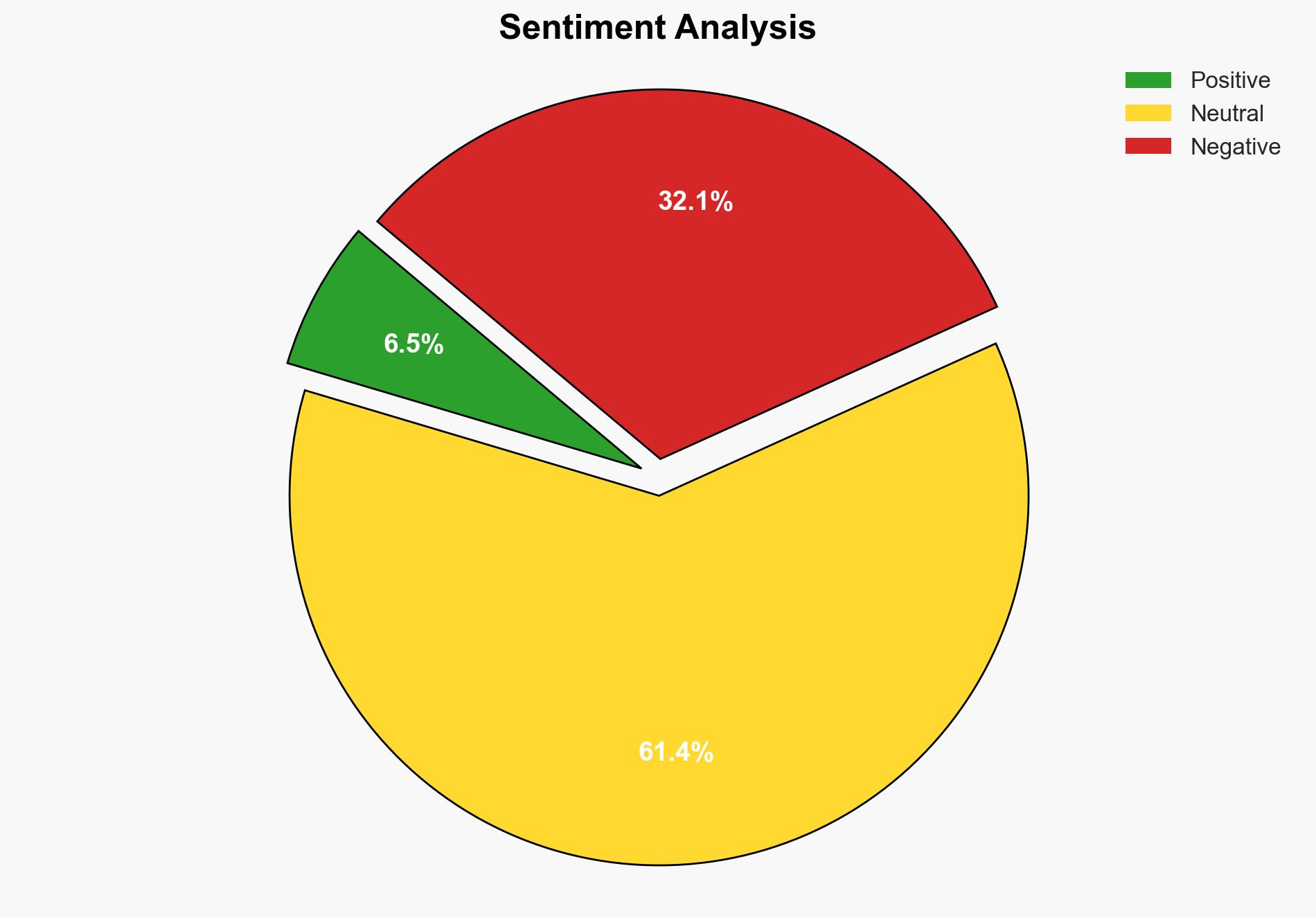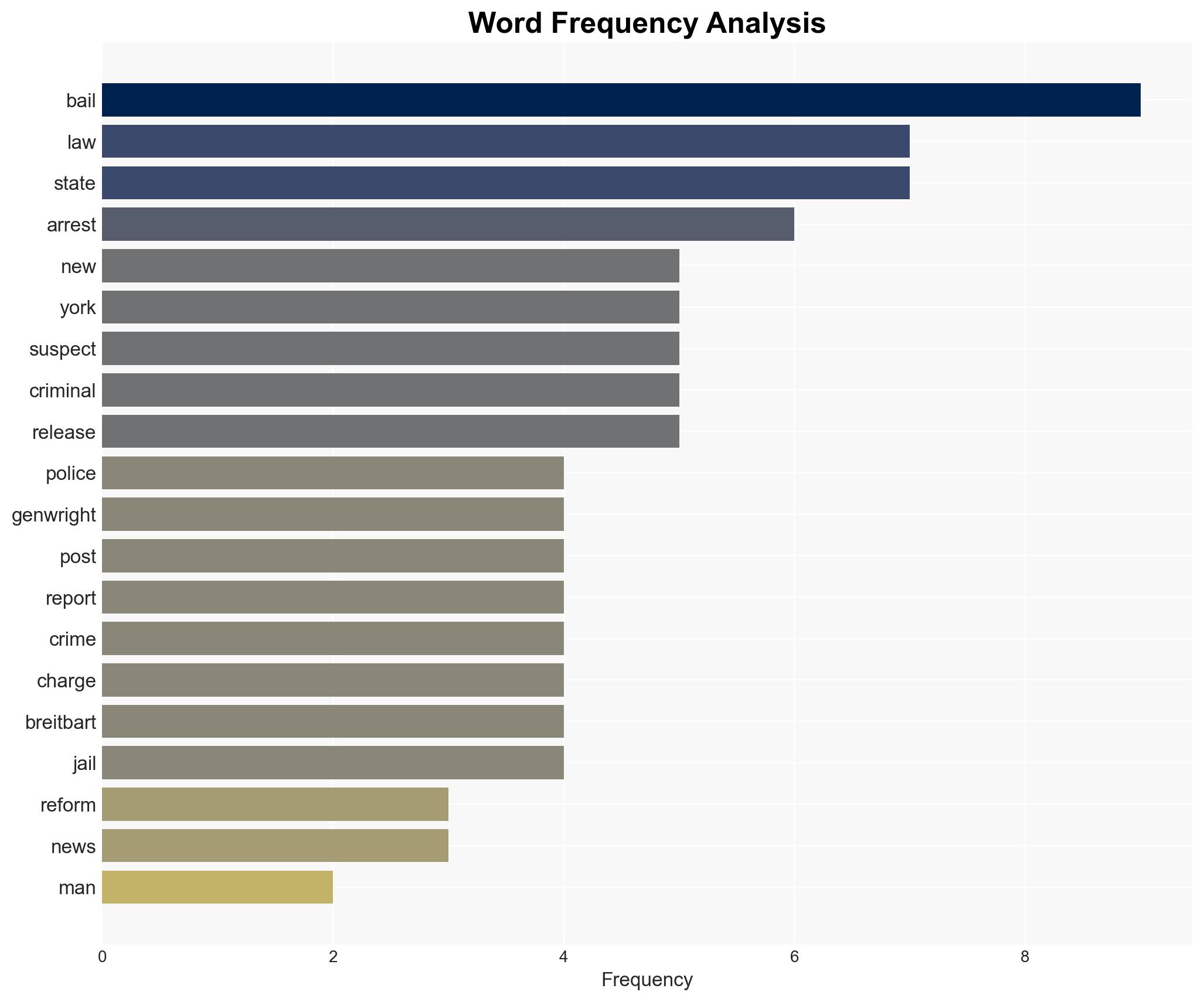PHOTOS Judge Frees Man Accused of Vandalizing NYPD Vehicles – Breitbart News
Published on: 2025-11-15
AI-powered OSINT brief from verified open sources. Automated NLP signal extraction with human verification. See our Methodology and Why WorldWideWatchers.
Intelligence Report:
1. BLUF (Bottom Line Up Front)
The strategic judgment is that the New York bail reform law is contributing to the release of individuals who may pose a continued threat to public safety, with a moderate confidence level. The most supported hypothesis is that the bail reform law, while intended to reduce pretrial detention, inadvertently allows repeat offenders to continue criminal activities. Recommended action includes a review and potential revision of the bail reform law to better balance public safety with judicial fairness.
2. Competing Hypotheses
Hypothesis 1: The bail reform law is effectively reducing unnecessary pretrial detention without significantly increasing public safety risks. This hypothesis suggests that the release of Christian Genwright is an isolated incident and not indicative of a systemic issue.
Hypothesis 2: The bail reform law is inadvertently increasing public safety risks by allowing repeat offenders to be released without adequate oversight. This hypothesis is supported by the pattern of repeat offenses and the nature of the crimes committed by individuals like Genwright.
The second hypothesis is more likely due to the evidence of repeat offenses and the nature of the crimes, which suggest a potential gap in the current system’s ability to manage public safety effectively.
3. Key Assumptions and Red Flags
Assumptions include the belief that supervised release programs are sufficient to mitigate risks posed by released individuals. A red flag is the potential bias in the reporting source, Breitbart News, which may have a political agenda influencing the portrayal of the bail reform law. Deception indicators include the possibility of selective reporting or omission of counterexamples where the law has functioned effectively.
4. Implications and Strategic Risks
The primary implication is a potential increase in crime rates if repeat offenders continue to exploit the bail reform law. This could lead to political backlash and pressure to amend or repeal the law. There is also a risk of public distrust in the judicial system, which could escalate into broader social unrest or political polarization.
5. Recommendations and Outlook
- Conduct a comprehensive review of the bail reform law to identify and address gaps in public safety measures.
- Enhance monitoring and support systems for individuals released under supervised programs to prevent recidivism.
- Engage in public communication efforts to clarify the objectives and outcomes of the bail reform law to reduce misinformation and public concern.
- Best-case scenario: The law is revised to improve public safety without compromising judicial fairness.
- Worst-case scenario: Continued public safety incidents lead to a repeal of the law and a return to high pretrial detention rates.
- Most-likely scenario: Incremental adjustments to the law improve oversight and reduce repeat offenses, stabilizing public sentiment.
6. Key Individuals and Entities
Christian Genwright, Judge Jennifer Tubridy, Governor Andrew Cuomo (historical context), New York State Legislature.
7. Thematic Tags
National Security Threats, Judicial Reform, Public Safety, Political Polarization
Structured Analytic Techniques Applied
- Cognitive Bias Stress Test: Expose and correct potential biases in assessments through red-teaming and structured challenge.
- Bayesian Scenario Modeling: Use probabilistic forecasting for conflict trajectories or escalation likelihood.
- Network Influence Mapping: Map relationships between state and non-state actors for impact estimation.
Explore more:
National Security Threats Briefs ·
Daily Summary ·
Support us
·





